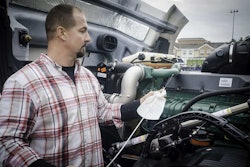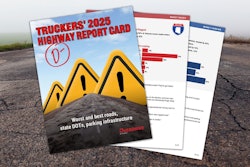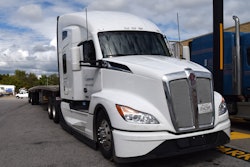You’re gazing idly at the landscape when a yellow light on the dash winks on, spoiling the serenity: Your diesel particulate filter (DPF) needs attention. In most situations, the warning doesn’t signify any real trouble.
It’s just telling you a normal function in the life of a post-2006 diesel engine has to take place. If you understand DPF maintenance cycles, you’ll have a better idea of the urgency of the situation.
What a DPF does
Any diesel truck manufactured after Jan. 1, 2007, has a DPF. There’s actually a lot of heavier-than-air stuff in diesel smoke. EPA calls it “diesel particulate,” better known as soot.
These are ultra-fine particles of elemental carbon with absorbed compounds such as sulfate, nitrate, metals and organic compounds. A DPF is engineered to trap such particles. The ceramic filter itself, a little smaller than a loaf of bread, sits in a metal canister that also acts as a collection device for soot. Eventually, it will need cleaning.
When to clean. A plugged DPF interferes with efficient exhaust flow. It can lead to compression or combustion problems if left untreated.
In most cases, the DPF burns off accumulated soot through either a “passive” or “active” regeneration. Most over-the-road owner-operators are likely to experience only passive regenerations, which take place automatically while driving, when engine load and drive cycles allow exhaust temperatures to reach roughly 600 degrees or more.

Under active regeneration, triggered by a series of steps taken by the operator while the vehicle is stationary, the system brings temperatures up to 1,100-1,200 degrees to burn off soot.
Either event is likely the reason a yellow dash light came on. The DPF light means the system needs to regenerate.
When it’s flashing, the regen must be done while parked. A solid DPF light means you can do a parked regen or a passive one. While the regeneration process burns off accumulated soot, what it doesn't do is clean out the ash from the actual filter media that traps the particulates. And because the regeneration process will not burn off all the ash, eventually it will collect in the canister and fill it up.
Driving style, application and plenty more play into how often a DPF needs to be cleaned. Vocational, urban and stop-and-go applications have much shorter intervals than long and heavy. Excessive idling also can shorten the interval.
There are two types of DPF ash cleanings. One is changing out the DPF, usually because it is chipped, cracked, burned or melted, which takes about 2.5 hours. A full cleaning takes around four to five hours. Cleaning is not cheap: A machine to clean a DPF costs about $20,000, which helps explain why getting the unit cleaned can run you about $500. Replacing the DPF costs around $2,000.
Keep your emissions aftertreatment system running
Not long after DPFs were required equipment in new diesels in 2007, 2010 engines introduced another wrinkle, the selective catalytic reduction system, which injects diesel exhaust fluid into the exhaust stream to separate nitrogen and oxygen in NOx emissions. There are some actionable steps owner-operators and small fleets can take to guard against some of the most common issues seen in emissions aftertreatment systems.
- When the dashboard lights up, don’t clear those codes. Techs need them to properly diagnose any issue.
- Clean the diesel exhaust fluid (DEF) doser in the SCR part of the system once a year, at least.
- Change your DEF filter according to manufacturer-recommended intervals.
- Keep a “clean room” approach around the DEF tank, particularly when you’re pumping the fluid.
- Be certain onf DEF quality: Beware long periods of downtime (a month or more) in extreme weather and/or when using DEF stored for long periods without climate control.
- Keep SCR-system efficiency tests in mind to periodically examine it to prevent expensive NOx sensor failures. Knowledgeable shop techs can perform these tests, as can any fleet whose made the investment in the right equipment and technician training.
Service shops have developed a variety of recommendations in recent years after working with customers to sort through a myriad problems arising from SCR systems as post-2010 truck penetrated the population of working Class 8s. A prominent truck stop's truck service network in 2024 developed a recommended annual PM program for SCR systems that could serve as a model for mechanically inclined owners. In addition to cleaning the DEF doser annually and performing an SCR efficiency test, as mentioned above, these items are part of that annual PM:
- DEF header unit cleaning
- DEF fluid quality test
- DEF filter replacement
- DEF system leak inspection
- ATS/EGR visual inspection
- DEF quantity test
- DPF regeneration
- Air filter/intake inspection
[Related: Used truck pricing, value: A role for aftertreatment maintenance]
If certain aftertreatment system problems seem mysterious, that’s often no accident. Much of the discussion among panelists in an Overdrive webcast in 2021 centered around misdiagnosis -- by the truck owner as well as by some technicians -- and insufficient communication among those parties. Both failures too often contribute to unnecessary repair costs and prolonged mechanical problems. The discussion remains relevant today; catch the replay below via the archived edition at Overdrive's Youtube channel.
Read next: Pull off extended oil drains for your diesel with routine analysis










